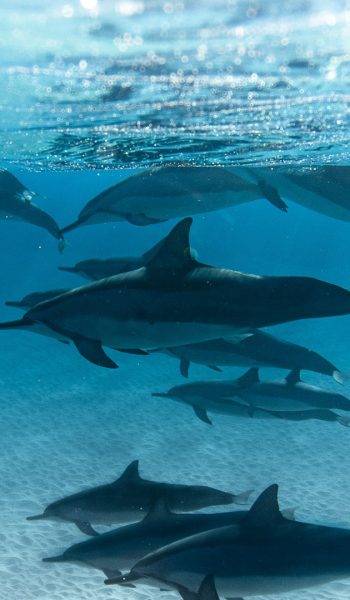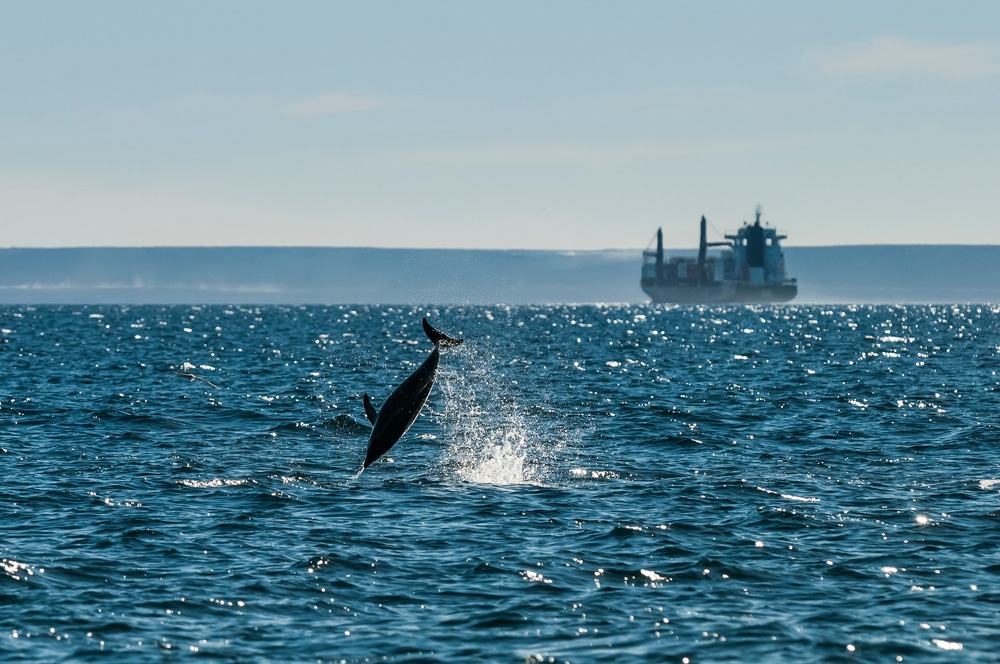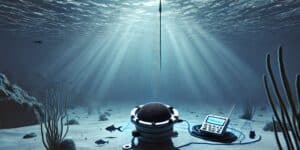Ocean freight stakeholders on a global level are not staying idle with regard to the noise pollution created underwater by the overall business. All companies involved, led by the International Maritime Organization (IMO) and its guidelines, recognize that the environment, especially the ocean, shall be protected to ensure marine life sustainability. The northern hemisphere is critically stroked due to the increase of underwater noise level by 20 Db.
Among over actions, several initiatives induced by technology research were introduced to large commercial ships due to increasing concerns about the adverse effects of noise on marine life. As of 2008, review guidelines on the reduction of ship noises, though non-mandatory, were developed by the IMO. Then, the IMO’s Marine Environment Protection Committee (MEPC) approved guidelines regarding the minimization of underwater noise from sea transportation activity.
What do shipowners and ship operators do to reduce underwater noise?
While sailing, merchant ships’ propellers and machinery cause hydroacoustic underwater radiated sounds that are considered harmful to animals like marine mammals. Therefore, engineers work on the ship’s design, engines, and equipment (propellers, hull form, onboard machinery) from an environmental protection perspective.
Your environmental monitoring at your fingertips!
Optimize your environmental monitoring, become smarter and more sustainable with a unified system that gathers all your environmental sensors & data in one place.

1. Identify the noisiest vessels
The active correspondence group of IMO understood that quieting the number of loudest ships is a great leap to efficiently lower the total contribution of noise from the sea shipping industry to the global ocean noise bucket.
Considering the distribution of noise levels from a fleet of vessels, some experts assessed that the noisiest 10% of ships, meaning at 6.8 dB or higher than average, generate between 48% and 88% of the total sea area. Thus in 2009, the IMO invited the member states to recommend a review of their fleets in order to determine which vessels would need a reshape according to the new know-how so as to have the greatest impact on underwater noise output.
The Energy Efficiency Design Index (EEDI), which has been created for new ships, is a prospective process for recognizing the noisiest vessels. Together with the Existing Vessel Design Index (EVDI) established by Rightship in 2013, this method can be used to measure the efficiency of a specific ship and compare the result with those of alike size and type.

2. Reduce cavitation
Excessive cavitation is recognized as the main cause of underwater noise on the loudest vessels. As a reminder, “cavitation” refers to the formation and implosion of water vapor cavities resulting from the pressure variations during water movement across a propeller blade. The cavitation produces broadband noise.
Huge efforts, therefore, have to be done to reduce the degree of cavitation of commercial ships so as to minimize the hydroacoustic noise generated. The aim is to lessen the ambient level of underwater noise in the deep sea.
Most of the time, too much cavitation may come from two aspects:
- unappropriated propeller design: it does not fit the ship’s needs and operational conditions
- low-quality wake field into the propeller, usually related to a bad design of the aft end of the boat. Consequently, what has to be changed or enhanced to cut down underwater noise production from ships are the waking field in which the propeller operates and its overall design.
3. Modify the hull design
Another way to make a change to a ship’s noise level is by acting on the hull form so as to increase the flow into the propeller, and therefore to raise efficiency while dropping cavitation. This positively impacts the ship’s hydrodynamic design and allows energy consumption reduction, mostly fuel consumption which cost has exploded. The increased focus on energy efficiency forms part of the EEDI by the IMO.
Meanwhile, new progress in Computational Fluid Dynamics (CFD) has eased the study of the wake flow into the propeller movements. On this basis, and by the use of optimization methods, the hydrodynamic performance of the hull and propeller combined actions is enhanced.

4. Use green engineering
During new vessel construction, engineers transform or adapt all machinery and equipment that can become more sustainable and silent. The main concerned items are engines, hydraulic systems, ventilation, and pumps. Besides, some shipowners add silencers added to their vessels’ generators, vents, and engine rooms. Innovative isolation solutions are also developed.
5. Practice slow steaming
Sea transportation companies have clearly established direct linkages between speed and noise emanating from ships that are equipped with fixed-pitch propellers. Since 2007, slow steaming has been used in the major and busy routes in the eastern Mediterranean. From 2007 to 2013, thanks to the practice, the mean speeds came from 15.6 knots to 13.8 knots. By practicing slow steaming, some operators have observed in the last five years that the general broadband acoustic footprint produced by the fleet has got down by approximately 50% to 65%.
6. Use energy-saving devices
A wide range of Energy Saving Devices (ESDs) is now available. These are mostly devices attached upstream of the propeller to order its internal, improving its efficiency. In principle, ESDs have the capacity to lower propeller loading, meaning less cavitation. Because engineers have found ways to retrofit these devices to vessels in operation, they appear as possible solutions to the extreme cavitation encountered on the harshest sounding ships.
How do port operators contribute to underwater noise lowering?
Ports are not the least about the fight in mitigation of underwater noise, as they contribute to the extent of heavy noise pollution to their surroundings from their daily operations. There are different sources of noise, depending on the port activities and organization: heavy trucks and cars traffic, rail operations, the metal structure of ship-dock interface, and handling loads.

7. Evaluate noise levels and sources
The first phase in reducing underwater noise for port operators is to assess the intensities and quantities as well as the root causes of noise emissions. Investing in connected sensors around the area neighboring the terminal contributes to the initial assessment. The Port of Barcelona (Spain) conducts measurement of noise pollution from commercial shipping and using the data gathered, generates noise diagnostic maps and reports on the related acoustic impact.
Sinay has developed a tool for underwater noise emission from commercial vessels. Using a dedicated API, any company from the maritime industry can measure its Sound Exposure Level and evaluate its impact on marine wildlife.
8. Optimize traffic arrangement
Handling fewer ships on the docks at the same time for a given berthing place is a way to lessen underwater noise. As a matter of fact, while awaiting their turn, ships never turn off all auxiliary engines in order to maintain basic services like maintenance or cooking, which need a constant power supply. Advanced management avoids ship queueing in the port’s waters and by minimizing the stay of ships, reduces noises generated by the overall operations.
9. Replace some port structures and equipment
Heavy machines used in ports like reach cranes, forklifts, stackers, or terminal tractors generate noises. Deploying a range of modern and quieter equipment, especially electric and hybrid models, allows less noise pollution while ensuring operational efficiency, people’s safety, and the environment.
Some countries of the European Union, such as Sweden or Finland, have incorporated the fuel system for supplying energy on land, which is an instrument for ports to reduce noise pollution. Thanks to the system, one can afford to do without the auxiliary motors used for electricity generation for docked vessels, thus eliminating engine noise.
10. Continuous action for all the IMO’s dedicated departments and work group
In line with the MEPC’s recommendation in 2021, the IMO’s work group dedicated to Underwater Noise from Commercial Shipping has submitted a work plan to the Sub-Committee on Ship Design and Construction. The review aims at providing instruction based on the latest developments so as to remove the remaining barriers.
In 2022, the IMO’s Secretariat’s Department for Partnerships and Projects (DPP) launched a project bid to the Global Environment Facility. The bid aims at collecting funds for the “GloNoise Partnership project” (Global Partnership for Mitigation of Underwater Noise from Shipping) between all global stakeholders.
Conclusion
Aware of the impacts of their operation on marine life and the environment, ocean freight companies and port authorities are thriving to deal with underwater noises. Their ultimate goal is to operate in an environmentally friendly manner as they shoulder a worldwide economy.
Although things are improving, fighting against all sources of pollution from maritime shipping is a complex issue. More research is required, on technology for ships’ design and construction, but also on measurement and reporting of radiated noise from merchant ships.
Frequently Asked Questions About Initiatives to reduce Underwater Noise
Underwater noise refers to any sound that travels through water and can be heard by marine animals. It can come from a variety of sources, including shipping, construction, military activities, and oil & gas exploration.
The main sources of underwater noise pollution are human activities, such as shipping, construction, military activities, and oil and gas exploration. These activities generate noise through the use of machinery, explosions, and other processes that create sound waves that travel through the water. Natural sources of underwater noise, such as earthquakes and volcanic eruptions, also contribute to underwater noise pollution, but human activities are the main drivers of the problem.
Underwater noise can have negative impacts on marine life, including disrupting communication, altering behavior, and causing stress and injury.
For example, the noise from shipping can interfere with the ability of whales and dolphins to communicate with each other, while the noise from construction can disrupt the feeding and breeding patterns of fish and other marine animals.
Reducing underwater noise pollution is possible in several ways:
- Using less intrusive survey and mapping techniques
- Adjusting shipping routes to avoid sensitive areas
- Implementing best practices for underwater noise management during construction and maintenance activities
- Developing and implementing noise reduction technologies.
- Collaborating with governments and other stakeholders.
- Increasing public awareness and education.
- And much more.


